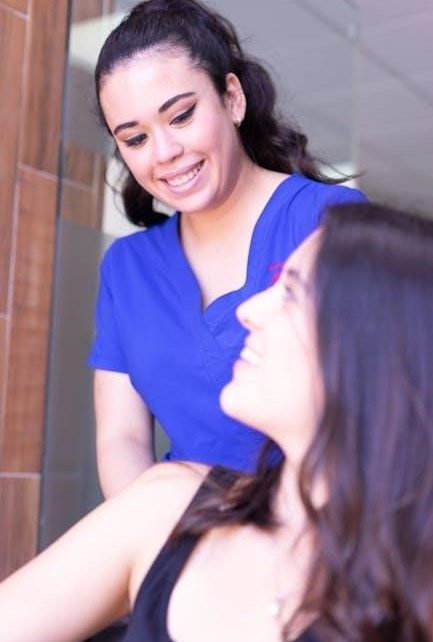Patient positioning is critical for medical procedures, ensuring safety, accuracy, and optimal outcomes. Proper positioning aligns anatomical structures, minimizes complications, and supports effective treatment across various disciplines.
1.1 Overview of Patient Positioning
Patient positioning refers to the precise placement of a patient’s body to facilitate medical procedures, ensuring safety, comfort, and optimal outcomes. Various positions, such as supine, prone, lithotomy, and Trendelenburg, are used across surgical, diagnostic, and therapeutic settings. Proper positioning aligns anatomical structures, improves access for healthcare providers, and minimizes complications. It is a critical aspect of care, requiring careful planning and adherence to guidelines to prevent risks like nerve injuries or pressure sores. Correct positioning also enhances the effectiveness of treatments and imaging, making it a cornerstone of modern healthcare practices. Standardized protocols and specialized equipment support accurate and safe patient positioning in diverse medical scenarios.
1.2 Importance of Proper Patient Positioning
Proper patient positioning is critical for ensuring safety, comfort, and procedural success. It minimizes risks of complications, such as nerve injuries or pressure sores, while optimizing access for medical procedures. Correct positioning improves diagnostic accuracy, facilitates surgical precision, and enhances patient outcomes. It also prevents long-term health issues related to prolonged or improper placement. Adherence to positioning guidelines is essential for maintaining patient well-being and upholding standards of care. Proper alignment and support ensure effective treatment, making it a cornerstone of ethical and high-quality healthcare practices. Accurate positioning is vital for both patient safety and the success of medical interventions across all disciplines.

Common Patient Positions in Medical Procedures
Common patient positions include supine, prone, lithotomy, lateral, and Trendelenburg. Each position serves specific medical purposes, ensuring optimal access and patient safety during procedures.
2.1 Supine Position
The supine position involves the patient lying on their back with arms at their sides or above the head. It is commonly used in abdominal, thoracic, and gynecological surgeries, as it provides excellent access to the chest and abdominal cavities. This position is also ideal for procedures requiring anesthesia, as it facilitates easy tracheal intubation and monitoring of vital signs. Additionally, the supine position is beneficial for imaging techniques like X-rays and CT scans, allowing clear visualization of internal structures. Proper support devices, such as pillows or stirrups, may be used to ensure patient comfort and prevent strain on the lower back.
2.2 Prone Position
The prone position requires the patient to lie face down, with their arms either extended above their head or tucked beside their body. This position is often used in spinal surgeries, certain abdominal procedures, and for patients requiring respiratory support in the ICU. It allows surgeons better access to the posterior regions of the body and can improve lung mechanics in ventilated patients. However, the prone position requires careful padding to avoid pressure sores and nerve injuries. Regular monitoring of the patient’s skin and neurological status is essential to prevent complications. Proper alignment and support devices are critical to ensure patient safety and comfort during the procedure.
2.3 Lithotomy Position
The lithotomy position involves placing the patient on their back with their hips and knees flexed, thighs apart, and legs supported in stirrups. This position is commonly used in gynecological, urological, and colorectal surgeries to provide easy access to the pelvic area. It facilitates procedures like hysterectomies, prostate exams, and childbirth. Proper positioning is crucial to avoid nerve damage and ensure patient comfort. The use of stirrups and supportive devices helps maintain the position while minimizing the risk of complications. Regular monitoring of the patient’s lower extremities is recommended to prevent circulatory issues or discomfort during prolonged procedures.
2.4 Lateral Position
The lateral position places the patient on their side, aligned with their shoulders and hips parallel to the operating table. This position is often used in orthopedic, thoracic, and neurosurgical procedures to access areas like the spine or lungs. Support devices such as pillows or bolsters are used to maintain alignment and prevent strain. The dependent arm is typically padded to avoid nerve damage, while the upper arm is secured. Proper positioning ensures optimal surgical access and minimizes the risk of complications, such as respiratory compromise or skin breakdown. Monitoring of the patient’s vital signs and comfort is essential during prolonged procedures in this position.
2.5 Trendelenburg Position
The Trendelenburg position involves tilting the patient in a supine position so their head is lower than their pelvis. This position is commonly used in abdominal, gynecological, and laparoscopic surgeries to improve access to pelvic organs. It can also aid in managing shock by increasing venous return. However, prolonged use may lead to respiratory compromise due to diaphragmatic compression. Proper padding and support are essential to prevent nerve injuries and skin breakdown. Continuous monitoring of the patient’s respiratory mechanics and hemodynamic stability is crucial. This position requires careful adjustment and consideration of the patient’s overall condition to balance surgical access with physiological safety.

Patient Positioning in Specific Medical Disciplines
Patient positioning varies across medical specialties, with unique requirements in ophthalmology, ENT, and surgery. Each discipline demands precise positioning to enhance surgical access and ensure patient safety.
3.1 Patient Positioning in Ophthalmology
In ophthalmology, patient positioning is tailored to facilitate precise access to the eye. The supine position is commonly used, with the head slightly elevated to prevent eye movement. Specific devices, such as adjustable headrests, are employed to stabilize the patient; Proper alignment ensures clear visibility for surgeons during procedures like cataract removal or retinal surgery.Attention to detail in positioning minimizes complications and enhances surgical outcomes, making it a critical aspect of ophthalmologic care.
3.2 Patient Positioning in ENT and Oral Surgery
Patient positioning in ENT and oral surgery requires precise alignment to ensure optimal surgical access. The supine position is often used, with the head elevated to improve visibility of the surgical site. For procedures involving the head or neck, specialized devices like Mayfield headrests are employed to stabilize the patient. Proper positioning minimizes complications, such as airway obstruction, and enhances surgical precision. In oral surgery, the patient is often placed in a slightly upright position to reduce swelling and improve access to the oral cavity. Accurate positioning is critical to ensure patient safety and successful outcomes in these delicate procedures;

Guidelines for Patient Positioning
Guidelines for patient positioning ensure safety, comfort, and optimal surgical access. They involve proper equipment, support devices, and documentation to prevent injuries and complications.
4.1 General Guidelines for Patient Positioning
General guidelines for patient positioning emphasize assessing individual needs, using supportive devices, and maintaining anatomical alignment. Proper positioning prevents nerve damage, pressure sores, and respiratory issues. Regular monitoring ensures safety and comfort, while documentation maintains accountability. These practices apply universally across medical disciplines, ensuring optimal outcomes for all patients.
4.2 Patient Positioning Controls and Equipment
Patient positioning controls and equipment are essential for precise alignment and safety. Tools like touch screens, support tables, and handles enable accurate adjustments. Advanced systems, such as the Green XTM (PHT-75CHS), offer intuitive interfaces for optimal positioning. Laser technology is also used for precise marking and alignment in imaging procedures. Companies like LAP provide specialized equipment for CT, MRI, and PET/CT scans. Proper use of these tools ensures patient safety, reduces complications, and enhances procedural efficiency. Regular maintenance and training on equipment are crucial for effective patient positioning in various medical settings.
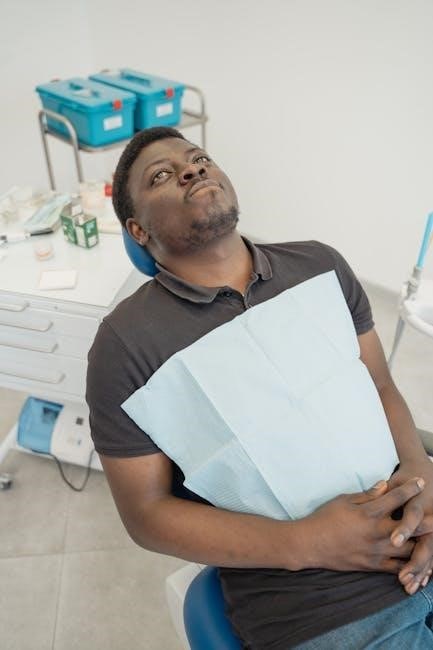
Complications and Risks Associated with Patient Positioning
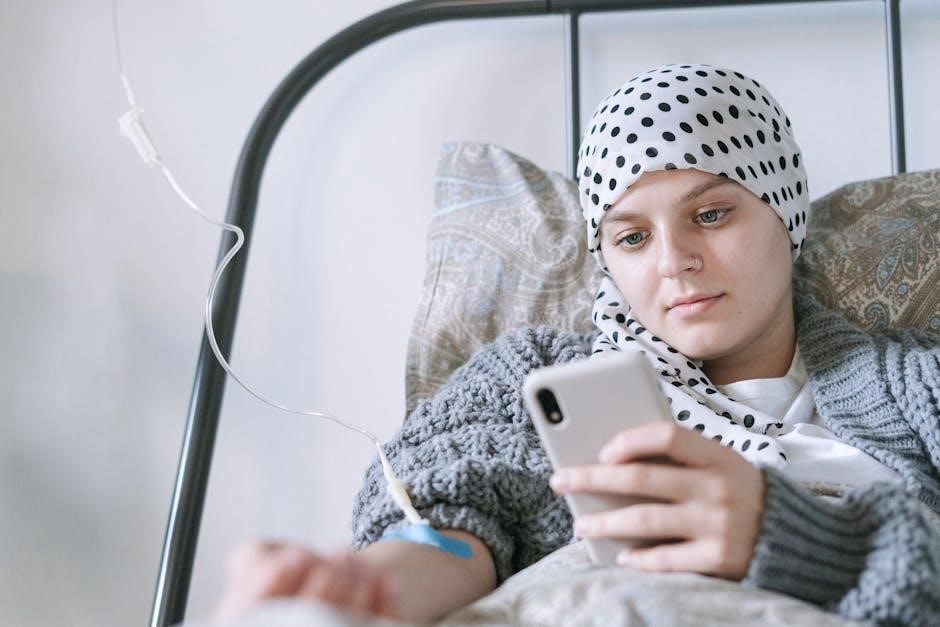
Patient positioning can lead to complications such as nerve injuries, skin breakdown, and respiratory issues, potentially causing long-term harm if not managed properly.
5.1 Nerve Injuries and Neuropathy
Nerve injuries and neuropathy are common complications of improper patient positioning. Compression or stretching of nerves during procedures can lead to temporary or permanent damage. For instance, the ulnar nerve may be compromised in the prone or lateral positions, while the brachial plexus is at risk in Trendelenburg positioning. Symptoms include numbness, tingling, and muscle weakness. Prolonged pressure on vulnerable areas exacerbates these risks, highlighting the need for careful planning and regular monitoring. Proper use of supportive devices and frequent adjustments can mitigate these risks, ensuring patient safety and preventing long-term neurological deficits.
5.2 Skin Breakdown and Pressure Sores
Skin breakdown and pressure sores are significant risks associated with improper patient positioning. Prolonged pressure on bony prominences can impair blood flow, leading to tissue ischemia and necrosis. Patients in immobile positions, such as the prone or supine, are particularly vulnerable. Factors like moisture, friction, and shear further exacerbate these risks. Early signs include erythema and localized pain, progressing to open sores if unaddressed. Preventive measures include frequent repositioning, using pressure-redistributing mattresses, and padding vulnerable areas. Timely interventions are crucial to avoid severe complications and promote wound healing, ensuring patient comfort and minimizing long-term care burdens.
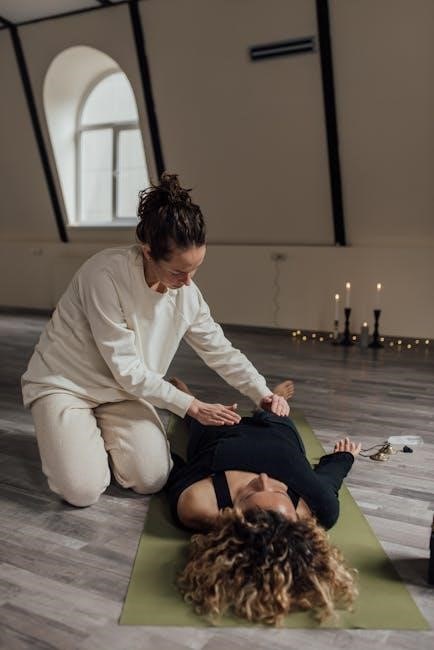
Best Practices for Patient Positioning
Adopting best practices ensures patient safety and procedural success. Use support devices, monitor positioning regularly, and adjust as needed to prevent complications and optimize outcomes effectively.
6.1 Use of Support Devices
Support devices are essential for maintaining patient stability and comfort during positioning. Tools like wedges, pillows, and adjustable tables help align body structures properly, reducing strain on muscles and joints. These devices also prevent pressure sores by distributing weight evenly. In surgical settings, specialized equipment such as headrests and stirrups are used to ensure precise positioning. Regularly inspecting and updating these devices ensures they meet safety standards. Proper use of support devices minimizes the risk of injuries and enhances procedural efficiency, promoting better patient outcomes. Their role is crucial in maintaining both patient safety and procedural success across various medical disciplines.
6.2 Regular Monitoring and Adjustments
Regular monitoring and adjustments are vital to ensure patient safety and comfort during positioning; Continuous assessment helps identify potential risks, such as nerve compression or skin pressure, before complications arise. Adjustments should be made gently to avoid sudden movements, which could cause injury. Monitoring includes observing for signs of discomfort, numbness, or respiratory distress. Proper documentation of position changes and adjustments is also essential for maintaining continuity of care. Regular checks ensure that support devices remain effective and that the patient’s alignment supports the procedure’s success. This proactive approach minimizes risks and enhances overall patient outcomes, making it a cornerstone of safe positioning practices.

Patient Positioning in ICU and Ventilated Patients
Patient positioning in ICU and ventilated patients is crucial for optimizing respiratory mechanics and preventing complications. Prone positioning improves oxygenation and reduces ventilator-associated lung injury in critical cases.
7.1 Effects on Respiratory Mechanics
Patient positioning significantly impacts respiratory mechanics in ICU and ventilated patients. Prone positioning enhances lung recruitment and improves oxygenation by redistributing lung secretions and reducing atelectasis. Supine positions can lead to decreased lung volumes and increased intrathoracic pressure, potentially impairing ventilation. Proper positioning strategies are essential to optimize respiratory function, particularly in mechanically ventilated patients, ensuring adequate gas exchange and minimizing complications. This highlights the importance of tailored positioning approaches based on individual patient needs and physiological responses. Effective respiratory mechanics are crucial for patient recovery and outcomes in critical care settings.
7.2 Prone Positioning in Ventilated Patients
Prone positioning in ventilated patients has been shown to improve oxygenation by enhancing lung recruitment and reducing atelectasis. This position promotes more even distribution of lung secretions and increases functional residual capacity. Studies indicate that prone positioning can significantly enhance gas exchange, particularly in patients with acute respiratory distress syndrome (ARDS). However, it requires careful patient selection and monitoring to mitigate risks such as skin breakdown or nerve injuries. Regular turning and the use of supportive devices are essential to ensure safety and effectiveness. Prone positioning is a valuable strategy in critical care, particularly for patients requiring mechanical ventilation, to optimize respiratory outcomes and reduce mortality. Proper implementation is key to maximizing benefits while minimizing potential complications.
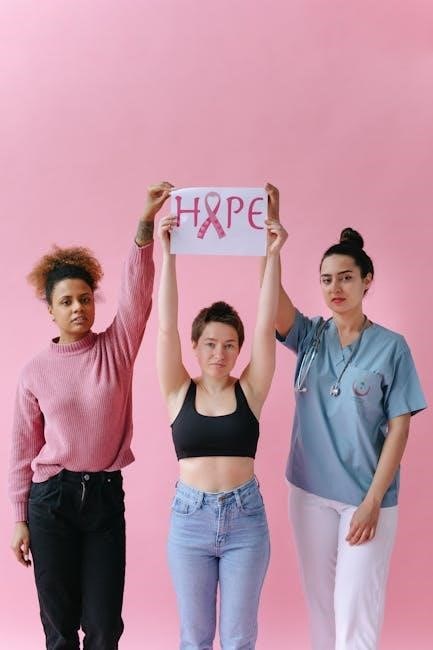
Documentation of Patient Positioning
Accurate documentation of patient positioning ensures continuity of care and legal compliance, detailing each position’s specifics, duration, and rationale for future reference and accountability.
8.1 Importance of Accurate Documentation
Accurate documentation of patient positioning is vital for maintaining continuity of care and ensuring legal compliance. It provides a clear record of the positions used, their duration, and the rationale behind them. This documentation helps healthcare teams track patient progress, identify potential risks, and make informed decisions. It also serves as a reference for future procedures, reducing errors and improving consistency. Furthermore, accurate records protect healthcare providers from legal liabilities by demonstrating adherence to established protocols and guidelines. Proper documentation is essential for upholding patient safety and professional accountability in all medical settings.
8.2 Legal and Professional Implications
Proper patient positioning documentation has significant legal and professional implications. It serves as evidence of adherence to care standards, protecting healthcare providers against claims of negligence or malpractice. Inaccurate or incomplete records can lead to legal disputes, financial penalties, and damage to professional reputations. Additionally, failure to follow established positioning guidelines may result in disciplinary actions. Accurate documentation demonstrates accountability and commitment to patient safety, aligning with professional ethics and legal requirements. It ensures transparency in care delivery and supports quality improvement initiatives, ultimately safeguarding both patients and healthcare providers.
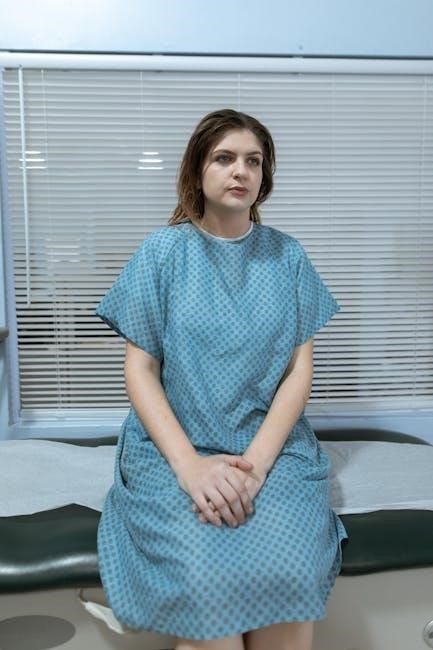
Emerging Trends in Patient Positioning
Emerging trends include advanced robotic systems for precise patient alignment and laser-guided positioning, enhancing accuracy and efficiency in medical procedures.
9.1 Use of Laser Technology for Positioning
The use of laser technology in patient positioning has revolutionized medical procedures by enhancing accuracy and efficiency. Lasers provide precise alignment guides, ensuring patients are correctly positioned for imaging and treatments. This technology is particularly valuable in modalities like CT, MRI, and radiation therapy, where exact positioning is critical. By projecting clear, visible lines, lasers help healthcare professionals achieve optimal alignment quickly and consistently. This not only improves the quality of diagnostic images but also minimizes the risk of complications during procedures. Furthermore, laser-guided systems often integrate with immobilization devices, ensuring patient stability throughout the process. As a result, laser technology plays a vital role in modern patient positioning, contributing to better outcomes and safer medical practices.
9.2 Advanced Positioning Systems in Radiology
Advanced positioning systems in radiology utilize cutting-edge technology to enhance precision and efficiency in patient positioning. These systems often include automated tables, robotic arms, and real-time imaging software to ensure accurate alignment. They are particularly beneficial for complex procedures, such as interventional radiology and radiation therapy, where millimeter precision is crucial. By integrating with imaging modalities, these systems enable rapid adjustments and consistent results. Additionally, they reduce the risk of human error and improve patient safety. The use of advanced positioning systems not only streamlines workflows but also contributes to better diagnostic and therapeutic outcomes, making them indispensable in modern radiology practices.
